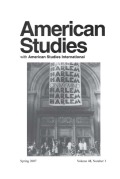Аннотация
At the end of the Civil Rights Movement, the Metropolitan Museum of Art organized Harlem on My Mind: Cultural Capital of Black America, 1900–1968, an exhibition that sought to explore the history and value of the predominantly Black community of Harlem, New York. In organizing one of the most controversial exhibitions in United States history, the Metropolitan decided to exclude Harlemites from participating in the exhibition planning and to exclude artwork by Harlem’s thriving artist community from the exhibition. The museum justified this decision by arguing the Harlem itself was a work of art and the inclusion of artworks in Harlem on My Mind would only detract from the overall exhibition. Public unrest led to boycotts of the exhibition before it even opened. This article details the struggles of Harlem-based artists to confront and challenge the unethical machinations of the institutional epicenter of the postwar international art world. This discussion addresses the critical appropriations of the event forged by black visual artists, photographers, and visitors who brought a competing set of political and emotional investments in the documentary works on display. It also demonstrates that the surge of Black activism spurred by the Harlem on My Mind controversy eventually pushed mainstream art institutions to feature black art exhibitions and launch community-based initiatives in support of black talents. The response of Black visual artists to the exhibition was an important part of the nascent Black Arts Movement’s development of an institutional infrastructure necessary to nourish Black art production and exhibition, and to redefine the political and aesthetic dynamics of the moment.All items © Mid-America American Studies Association
Authors: If you prefer to remove your text(s) from this database please contact the editor.

